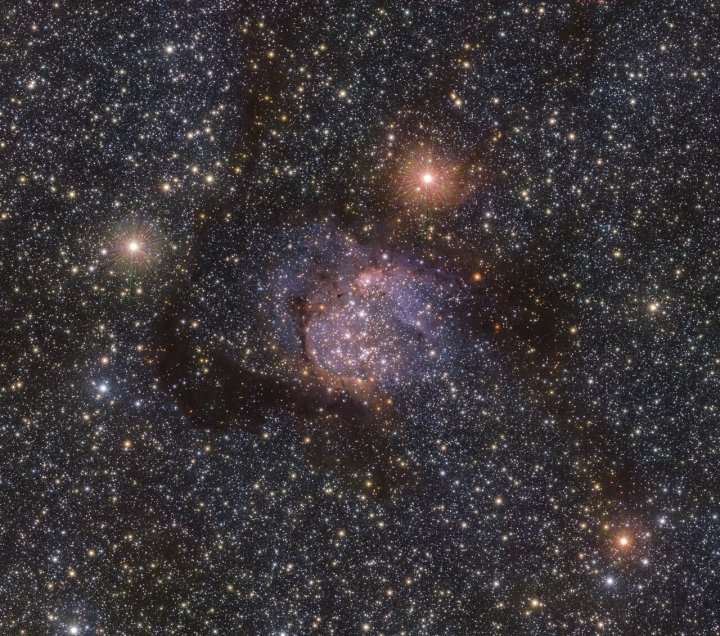A new image from the European Southern Observatory shows a stunning starscape around the nebula Sh2-54, located 6,000 light-years away in the constellation of Serpens. Located close in the sky to the famous Eagle Nebula, this is also a busy region of star formation where clouds of dust and gas are coalescing into knots and forming the hearts of new stars.
Nebulae like these are known as stellar nurseries because of all the new stars that form within them, and astronomers study them to learn more about stellar lifecycles and the conditions which are required for stars to form and grow.

The image was taken in the infrared range, which means less of the clouds of dust that form the nebula are visible. Instead, astronomers can look through the clouds of dust to see the stars forming within. It was taken using the Visible and Infrared Survey Telescope for Astronomy (VISTA) telescope, a ground-based telescope located in the Atacama desert, a highly elevated and very dry location in Chile.
VISTA is part of the Paranal Observatory, which includes other telescopes like the Very Large Telescope and the VLT Survey Telescope. This location is one of the most popular places on the planet for building ground-based telescopes because it very rarely rains there, meaning there is also no cloud cover on most nights so telescopes can observe the night sky more often. It is also in a sparsely populated area, so there is very little interference from radio signals and little light pollution.
This particular image was taken using VISTA’s 67-million-pixel camera as part of a survey called VVV. This survey uses a wide range of telescopes including Hubble, Chandra, and VISTA to look at the bulge of the Milky Way which is also a busy area for star formation.
Editors' Recommendations
- Hubble spots a bright galaxy peering out from behind a dark nebula
- James Webb images capture the galactic winds of newborn stars
- Hubble spots a massive star forming amid clouds of dust and gas
- Scientists investigate star formation in the famous Whirlpool Galaxy
- Hubble captures a formation of galaxies neatly lined up




